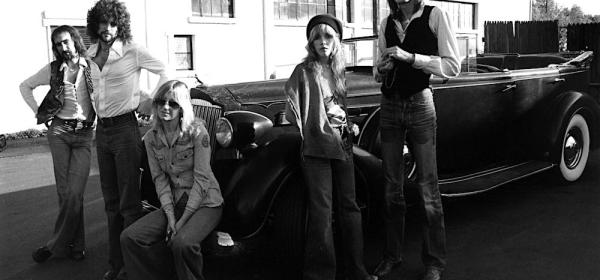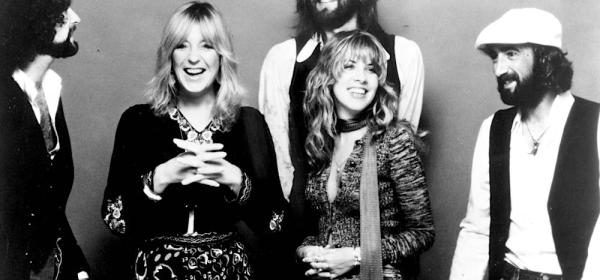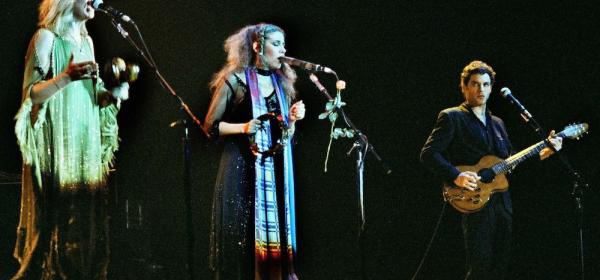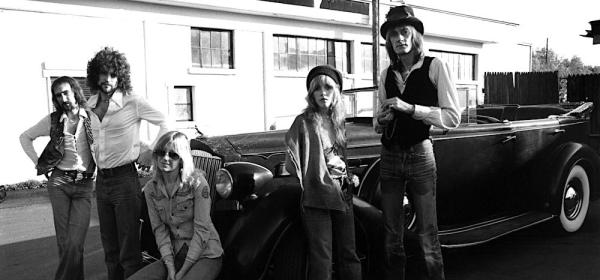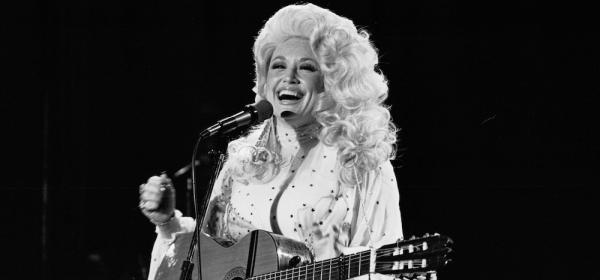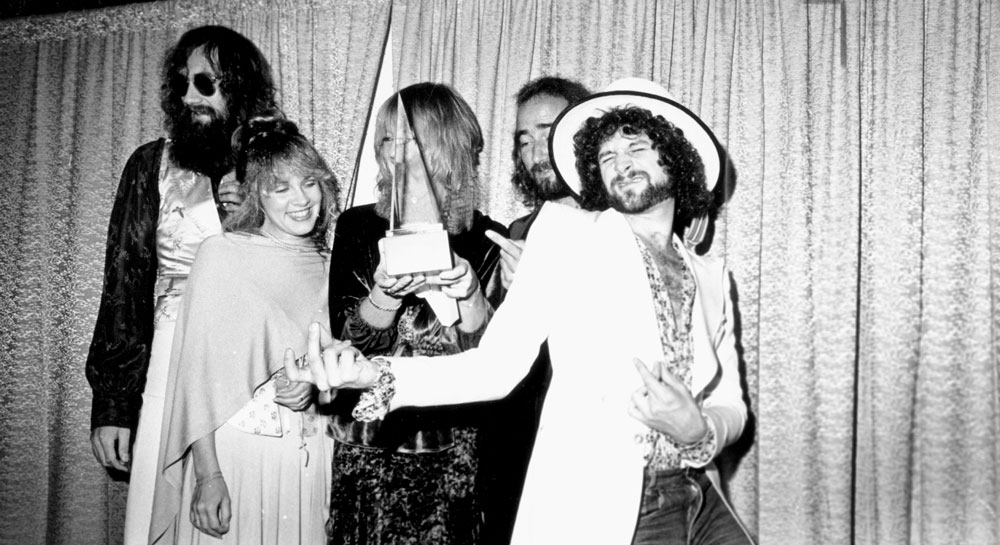
If you were asked to name Fleetwood Mac’s biggest chart hits, it’s likely songs like “Don’t Stop” or “Go Your Own Way”, both from 1977’s legendary Rumours album, would rate a mention from most people.
Turns out, they didn’t perform as well as you might think on the Australian chart, with the former reaching number 30 and the latter doing slightly better, peaking at number 20 – neither position high enough to place them among the band’s 10 highest-charting singles locally.
Here are the hits that resonated loudest here in Australia.
10. "Dreams"
Number 19, 1977
At least one single from Rumours makes the top 10. Written by Stevie Nicks in about 10 minutes in a studio adjacent to the one where the rest of the band were working, “Dreams” touched upon her split with bandmate Lindsey Buckingham – just one of the relationship breakdowns troubling Fleetwood Mac at the time. The rest of the band took some convincing to record the song, which ended up topping the US chart – their only number 1 there.
9. "Oh Well"
Number 19, 1969
Released by the third line-up of Fleetwood Mac, comprising Peter Green, Jeremy Spencer, Danny Kirwan, John McVie and Mick Fleetwood, this two-part song was written by Peter – although he had meant for the two parts to be marketed the opposite way than how they ended up being issued commercially. He described the bluesy “Part 1” as a “throwaway riff” that he intended to be the single’s B-side. Instead, it became the A-side and his preferred cut, “Part 2”, an atmospheric instrumental showcasing the Spanish guitar, was relegated to the flipside.
8. "Gypsy"
Number 17, 1982
Another Stevie Nicks track, “Gypsy” was the second single from Mirage with lyrics that reminisce about the time before Fleetwood Mac had taken off when then-lovers Stevie and Lindsey Buckingham lived a basic existence in a San Francisco apartment. By 1982, their romance was long over, which made filming the lavish Russell Mulcahy-directed music video in which the pair dance closely confronting.
7. "Big Love"
Number 16, 1987
Originally written by Lindsey Buckingham for what would have been his third solo album, “Big Love” ended up on Tango In The Night instead, and became the album’s lead single. Lindsey performed all the vocals on the track – including all the “oh-ahh” grunts. Despite many listeners assuming Stevie Nicks contributed to those vocal effects, the more feminine sounding parts were Lindsey’s voice with the pitch altered in the studio.
6. "Little Lies"
Number 16, 1987
Also peaking at number 16, but spending more weeks overall on the top 100, the third single from Tango In The Night was co-written by Christine McVie, who also sang lead on the song. Christine wrote the track with her new husband, Eddy Quintela, although the lyrics refer to a relationship in which the singer knows their partner is lying to them.
5. "Rhiannon"
Number 13, 1976
Appearing on 1975’s Fleetwood Mac, the first album the band released after Stevie Nicks and Lindsey Buckingham joined the line-up, “Rhiannon” had been written when the pair was still recording as Buckingham-Nicks. The song was inspired by a book Stevie had read called Triad in which a woman believes she is possessed by the spirit of someone called Rhiannon. Years later, Stevie learnt of a Welsh legend about the goddess Rhiannon and felt the song fit that story, too. In concert, Stevie would give particularly impassioned performances of “Rhiannon”, while the song inspired her trademark look of flowing skirts and long shawls.
4. "Albatross"
Number 12, 1968
Fleetwood Mac’s first ever hit single was instrumental recording “Albatross”, which was written by Peter Green and inspired by “Deep Feeling” by Chuck Berry from 1957. A soothing call-and-response-style track, “Albatross” took the band all the way to number 1 in the UK – the only time they have reached that position there.
3. "Hold Me"
Number 12, 1982
Their first new music in three years, the ultra-commercial soft rock stylings of “Hold Me” were a shift in sound after more adventurous previous album Tusk. The song was co-written by Christine McVie (and inspired by her relationship with Beach Boys drummer Dennis Wilson), who performed lead vocals with Lindsey Buckingham. The song’s other writer was British singer-songwriter Robbie Patton, who had been the opening act for Fleetwood Mac’s previous tour. Given the tensions between Fleetwood Mac members, the Mojave Desert video shoot was said to be especially tense.
2. "Sara"
Number 11, 1979
The second single lifted from 1979’s Tusk, this Stevie Nicks composition has been the subject of much scrutiny over what inspired its lyrics. Stevie has admitted that the name Sara is what she would have called her and Don Henley’s baby had she not decided to terminate the pregnancy (and had it turned out to be a girl). The song is also believed to reference Stevie’s friendship with singer/model Sara Recor, who dated (and later married) Stevie’s band-mate Mick Fleetwood.
1. "Tusk"
Number 3, 1979
Shockingly Fleetwood Mac’s only top 10 single in Australia, “Tusk” was the lead single and title track of the band’s 1979 double album. Based around a riff the band played during sound check, the song featured the University of Southern California’s marching band, whose parts were recorded at Dodger Stadium in LA, with footage from the session used in a music video to accompany the song. Since band member John McVie was overseas on the day, he was represented in the video by a cardboard cut-out. Mick Fleetwood and Lindsey Buckingham also added more experimental sounds to the track, including beating a leg of lamb with a spatula and hitting tissue boxes.


